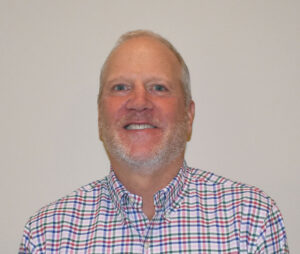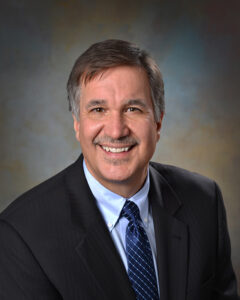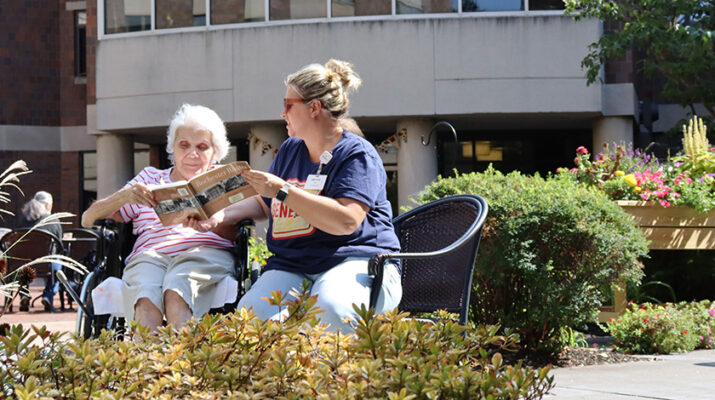Senior facilities in Rochester have 1,600 vacant beds because of lack of workers to care for patients
By Deborah Jeanne Sergeant

All areas of healthcare experienced significant challenges during the pandemic, but not as extreme as the seismic shift in long-term care facilities.
Already struggling to care for a huge influx of aging baby boomers on decade-stagnant budgets, facilities faced an employment crisis, supply shortages, increased protocols and greater demand as seniors sick with COVID-19 needed someplace to go after discharge from the hospital. In more recent months, skyrocketing inflation and continuing employment and budgetary difficulties have pushed many nursing homes to the edge.
Charlie Runyon, president and CEO of St. John’s Living in Rochester, said that the industrywide problem largely stems from funding, which leads to lack of staffing and fewer open beds.
“Right now, the biggest issue is access to nursing home care,” Runyon said.
His 455-bed facility can accommodate only 300 because he lacks the employees to care for the remainder.
“In Monroe County, there are 1,600 vacant beds which causes significant backups with people waiting in hospitals for beds,” he said.
This is between people requiring long-term care and to a smaller extent, those who need short-term rehab.
One of the reasons for greater demand is that during the pandemic, anyone applying for Medicaid was approved without a vetting process. Runyon explained that now they have to go through the process to receive assistance. Before, facilities waited about 30 days for payment, but with so many applications flooding the system, it could be nine months before residents receive approval and facilities receive payment.
“We lose $100 a day for those who are approved for Medicaid,” Runyon said. “It’s a shortfall of $100 a day. Seventy percent of our residents are on Medicaid. This is across the state.”
Even worse, nursing homes across the state have gone 15 years without a Medicaid increase. The most recent approved increase was supposed to be a combination of 6.5% from New York and 1% from the federal government, spread across three years.
Runyon said that so far, his facility has received only half the amount for one of those three years and that the proposed 7.5% increase was folded into a $168 million approved by New York two years ago to fund a mandated staffing ratio legislation passed two years ago, “money we were already due,” Runyon said.
The situation is like a company offering a raise and then a holiday bonus, but later reneging on the bonus, claiming that it’s part of their raise.
Runyon said that receiving sufficient funding would help long-term care facilities pay better wages and attract more workers.
“We were already at minimum wage and exceeded it to be in the market,” he said. “For Upstate nursing homes, between 2012 and 2022, the salary increases for RNs went up 48%. For LPNs, 53% and CNAs, 46%. We’ve increased by about 48% over that window without reimbursement. The labor market, the payrate has skyrocketed and Medicaid hasn’t come close to reimbursing us for those wages.”
Nursing homes have also struggled to replace retiring baby boomer workers.
“Those who are here have made a commitment to caring for elderly folks and they do a great job under very difficult circumstances,” Runyon said. “It’s more of a calling than a job.”
To help sustain adequate levels of care, Runyon said that his organization has become more creative in staffing by cross-training employees such as training non-nursing staff in how to feed residents who need help at the table and assist with other non-medical care.
St. John’s is also working toward becoming a hub for the community by providing educational resources for community to provide better elder care at home. It also helps families become more familiar with St. John’s as a resource once they need a higher level of care.
Runyon hopes that continued legislative representation will help increase reimbursement by 20%.
“Albany needs to hear loud and clear what a vital role nursing homes play in the continuum of healthcare,” he said. “We’ve been left out so long. Nursing homes were always an afterthought. Now with the backups in the hospital, the consequences of leaving nursing homes out of the continuum of healthcare is rearing its ugly head.”

At Jewish Senior Life, CEO Mike King, has been working with advocacy with LeadingAge NY and local legislators about increasing the daily NYS Medicaid rate. Like other long-term care facilities, funding and workforce are the top issues, both stemming from inadequate reimbursement.
“In the past few years, wages have gone up close to 40%,” King said. “We’re all fighting for nurses and LPNs.”
Like families, the rising costs of food, utilities and supplies challenge the budgets of nursing homes. Offering other services such as rehabilitation, respite care and continuing care helps long-term care organizations scrape by. But the widespread budgetary shortfalls and employee shortages have caused hospital back-ups that King calls “a crisis.”
“Even before the pandemic, we were on a precipice for finding staff,” he said. “You have this big exodus of people who left. Finding staff, growing staff and getting them committed to your organization is hard. We pride ourselves on a great patient experience.”
King said that 70% of nursing homes in New York don’t meet the state’s mandatory staffing ratio implemented several years ago (although Jewish Senior Life does).
“Some are taking beds offline for that reason,” he said. “Some close. Hill Haven shut down two years ago. That was 300 beds. Monroe County has the fastest growing older adult population of the entire state. People are going to need assisted living and nursing care. People try to stay home as long as they can but at some point, they will need care.”
One of the ways Jewish Senior Life is meeting its staffing challenges is partnering with Heritage Christian Services to work with individuals with special needs through a 10-month internship. Heritage supplies support and Jewish Senior offers a work environment. So far, Jewish Senior Life has trained 40 people who have developmental disabilities and 20 of them work on the Jewish Senior Life campus.
The organization also works with high school students who come on campus a couple of days a week to learn about agency services.
“Making that connection early on, they may think this could be a potential career, working with older adults,” King said. “Once people get connected with residents, relationships flourish. It’s wonderful to see the connections between younger and older adults.”
Those with a working permit can find a part-time job at Jewish Senior Life as young as 15.
Jewish Senior life also trains LPNs and CNAs on-site.
King wants to see more grants to help more adults afford education in nursing, but he views that as a long-term fix.
“We have to figure this out as a community, especially in Rochester and in Upstate and especially in rural communities that have one or two nursing homes,” he said.

